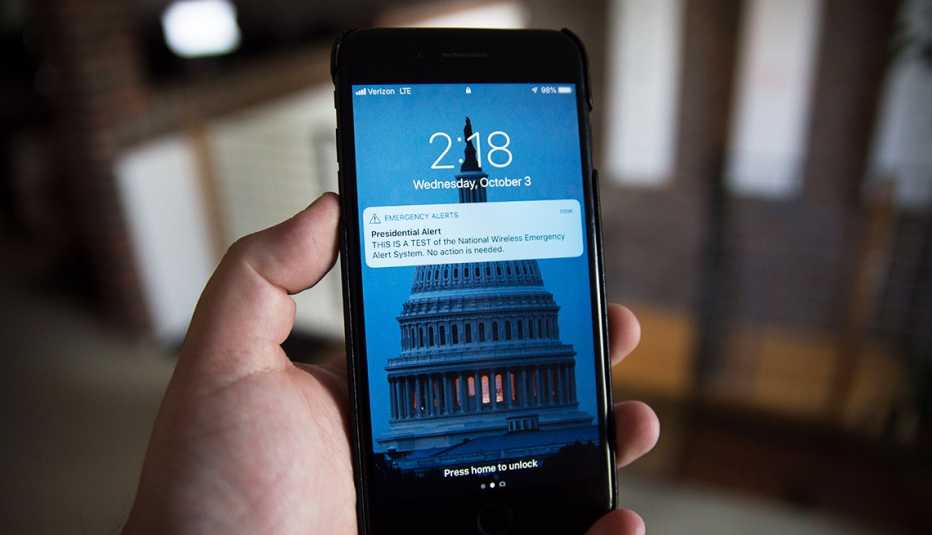AARP Hearing Center


If you have a mobile device, don’t be alarmed when you and everyone you know get an emergency alert on Wednesday, Oct. 4. The federal government plans to conduct a nationwide test of the system, that will be directed to all consumer cellphones. At the same time, an emergency test alert will be sent out via radio and television.
The Federal Emergency Management Agency (FEMA) is conducting the test, in coordination with the Federal Communications Commission (FCC), to make sure the systems “continue to be effective means of warning the public about emergencies, particularly those on the national level,” according to an agency press release. The last nationwide test of the system occurred on Aug. 11, 2021.
What to expect
- On Oct. 4, FEMA will activate its warning system. At around 2:30 p.m. ET, a wireless emergency alert will begin to be transmitted from cell towers across the nation, lasting for about a half hour.
- During that time, most cellphones across the country should receive the alert if they are turned on and come within range of an active tower. Such short emergency messages that warn the public of an impending natural or human-made disaster can be sent to mobile devices without the need to download an app or subscribe to a service.
- Your cellphone should receive the message only once even though it is being sent out repeatedly for the half-hour test period.
- For consumers, the message that appears on their phones will read: “THIS IS A TEST of the National Wireless Emergency Alert System. No action is needed.”
- Phones with the main menu set to Spanish will display: “ESTA ES UNA PRUEBA del Sistema Nacional de Alerta de Emergencia. No se necesita acción.”
The test alert sent to radios and televisions is scheduled to last approximately one minute. The test message should be familiar to most Americans: “This is a nationwide test of the Emergency Alert System, issued by the Federal Emergency Management Agency, covering the United States from 14:20 to 14:50 hours ET. This is only a test. No action is required by the public.”
In case the Oct. 4 test is postponed due to widespread severe weather or other significant events, the backup testing date is Wednesday, Oct. 11.
History of the emergency alert system
As communications technologies have evolved, so, too, have the federal government’s emergency alert systems — starting with radio in the 1950s, then television and eventually other media, including cellphones and even electronic billboards. Today, the goal is for the White House to be able to address the public within 10 minutes during a national emergency.



































































More From AARP
How to Schedule a Message Delivery in Advance
Collaboration tools like Teams and Slack make it easy
‘Juice Jacking’ Raises Concerns on Malicious Software
You can easily protect your smartphone, other devices
6 Innovations to Help People Live Better as They Age
Safety, independence are possible by leaning into tech